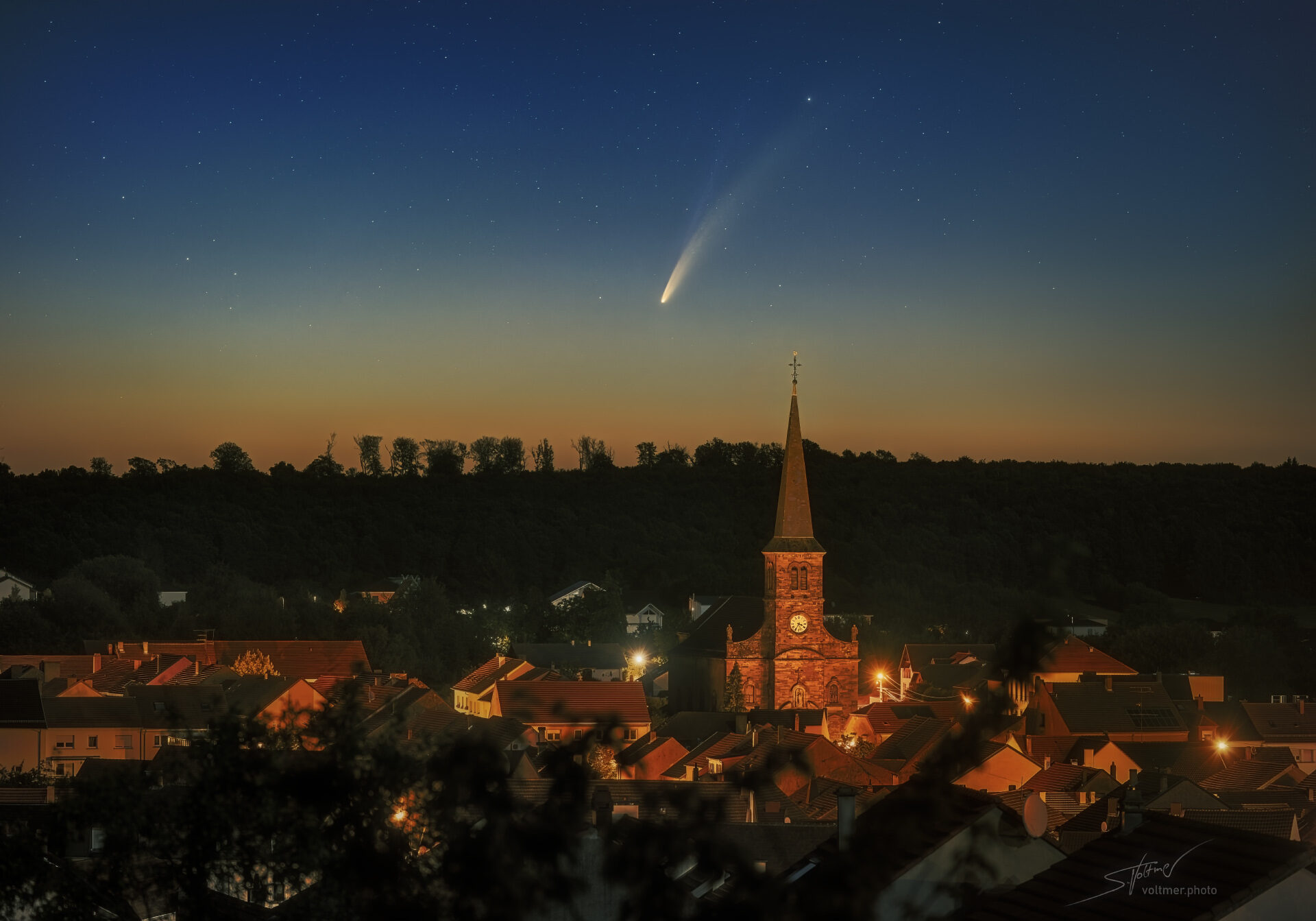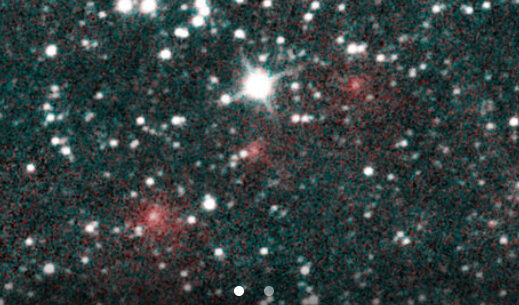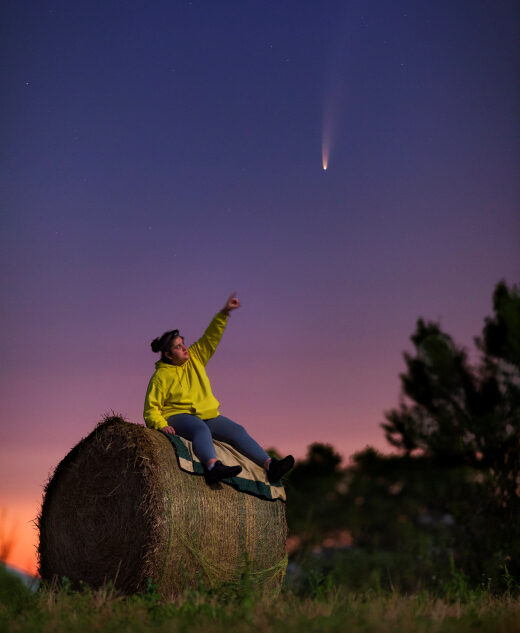
The brighter of the two is the dust tail, made of dusty-rocky grains sprinkled like crumbs along the comet's curved orbit. Just above it is the faint ion tail, made of gas shoved straight away from the sun by the solar wind.
"The ion tail is relatively dim," says Voltmer. "To record it, I had to stack 63 frames captured with my Nikon D800 digital camera (ISO 320)."
Look carefully at the ion tail; it's blue. This makes it tricky to see against a backdrop of blue twilight. Visibility will improve in the days ahead as the comet moves into darker skies farther from the sun.
Stay tuned! Sky maps: July 9, 10, 11, 12, 13, 14, 15.
COMET NEOWISE HAS A SUPER-SIZED NUCLEUS
Now we know why Comet NEOWISE (C/2020 F3) is so bright. Its nucleus is huge. Researchers working with NASA's NEOWISE spacecraft have analyzed infrared emissions from the comet's core, shown here in discovery images from March 2020:

"5 km is extremely large for a comet approaching this close to the sun (think Comet McNaught-sized), which explains its high activity," says Qicheng Zhang, a PhD student in planetary sciences at Caltech.
On July 3rd, Comet NEOWISE passed by the sun near the orbit of Mercury. The oversized nucleus helped it survive the encounter, which some comets would have found too hot to handle. Now NEOWISE's sun-heated core is spewing massive amounts of dust and gas, creating a worldwide sensation.
"Here is my daughter Izar ('Star' in the Basque language) pointing out the comet in the sunrise sky over Girona, Catalonia, Spain," says photographer Juan Carlos Casado. "It was easy to see with the naked eye."
"Foreground lighting in the photo is natural, provided by the Moon," he adds.
For Comet NEOWISE, the future looks bright. Its large nucleus is a reservoir of dust and gas that should continue to fill the comet's double tail with visible material for weeks to come. Observing tips: Wake up about 90 minutes before sunrise, find a place with a clear horizon, and look northeast. The comet is visible to the naked eye as a fuzzy patch with a tail. Binoculars are recommended for full effect.
Sky maps: July 9, 10, 11, 12, 13, 14, 15.
THE MESOSPHERE IS STILL COLD
Noctilucent clouds (NLCs) have been extra-abundant this summer. Nearly half of all photos of Comet NEOWISE taken from Europe in the past few mornings have caught the comet surfing waves of electric blue. The reason: It's cold in the mesosphere. Very Cold. These data from NASA's Microwave Limb Sounder show how the temperature has cratered 83 km above Earth where NLCs form:
Lynn Harvey of the University of Colorado's Laboratory for Atmospheric and Space Physics made the plot, which spans 14 years. 2020 is traced in red. "Conditions continue to be extremely cold with temperatures setting cold records on some days," she says.
For noctilucent clouds, cold is good. NLCs form when summertime wisps of water vapor rise up to the mesosphere, allowing water to crystallize around specks of meteor smoke. Low temperatures help the ice crystals form.
In addition to a major outbreak in Europe, the clouds have spread across the USA to southern California. Everyone should be watching for them. The best time to look for NLCs is during the hours after sunset (or before sunrise) when the sun is more than 6 degrees below the horizon: diagram. If you see electric-blue tendrils spreading across the sky, take a picture and submit it here.
A "CANYON OF FIRE" ON THE SUN
During the late hours of July 8th, a magnetic filament on the sun became unstable and snapped. The eruption cut a "canyon of fire" in the sun's atmosphere and hurled a faint coronal mass ejection (CME) into space. NOAA analysts are modeling the CME now to see if it might hit Earth's magnetic field in the days ahead.
Stay tuned for updates. Aurora alerts: SMS Text.





Comment: See also:
- Is Comet SWAN fragmenting? Astronomers detect powerful outburst
- Comet ATLAS Y4 is breaking up
- Comet 67P surprises scientists with 'bright outbursts', collapsing cliffs and rolling boulders during Rosetta mission
And check out SOTT radio's: